
The Lamai Lion Pride of 22 lions, including two adult males, lords it over the northern Serengeti on the Kenyan border of the Mara river. We come upon them twice in two days: once having devoured an eland, the largest African antelope, so full they could barely waddle 10 steps before collapsing on each other’s chests – purring or snoring so deeply that the earth thrummed.
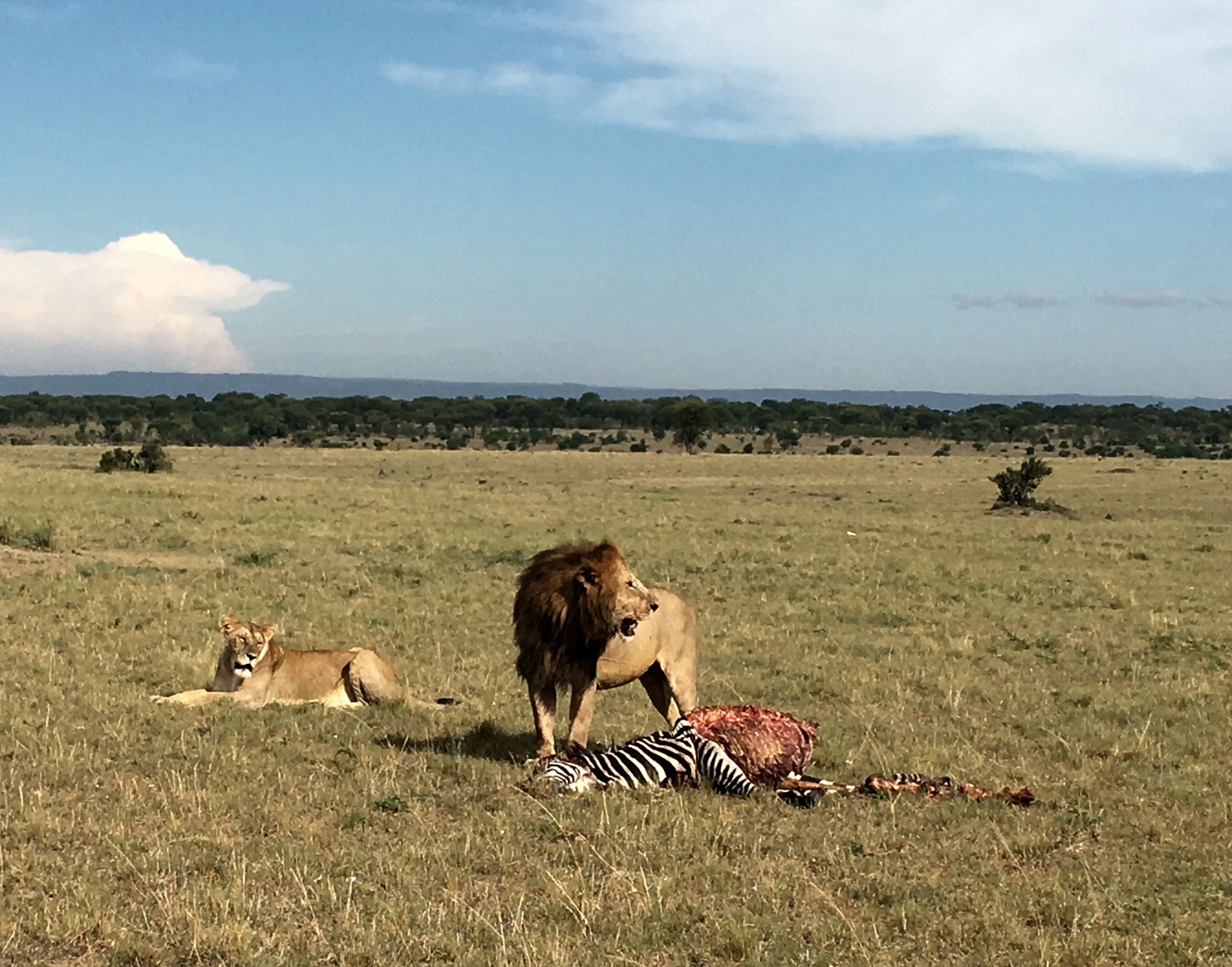 And the next day we found them watching a lengthy spectacle of one of the males dragging a half-eaten zebra kill over several kilometers to keep it from the rest of the pride. Two of the lionesses – probably the actual hunters, followed him doggedly, with jackals dancing around, and occasionally attempting to dine on the fruit of their labor but he shook them off with a roar – like the sound of a volcano about to erupt.
And the next day we found them watching a lengthy spectacle of one of the males dragging a half-eaten zebra kill over several kilometers to keep it from the rest of the pride. Two of the lionesses – probably the actual hunters, followed him doggedly, with jackals dancing around, and occasionally attempting to dine on the fruit of their labor but he shook them off with a roar – like the sound of a volcano about to erupt.
 We returned hours later to find him guarding the zebra – still half-eaten – under a tree far from the rest of the pride, the same lionesses several meters away. Either his dutiful harem or attempting their version of feline feminism.
We returned hours later to find him guarding the zebra – still half-eaten – under a tree far from the rest of the pride, the same lionesses several meters away. Either his dutiful harem or attempting their version of feline feminism.
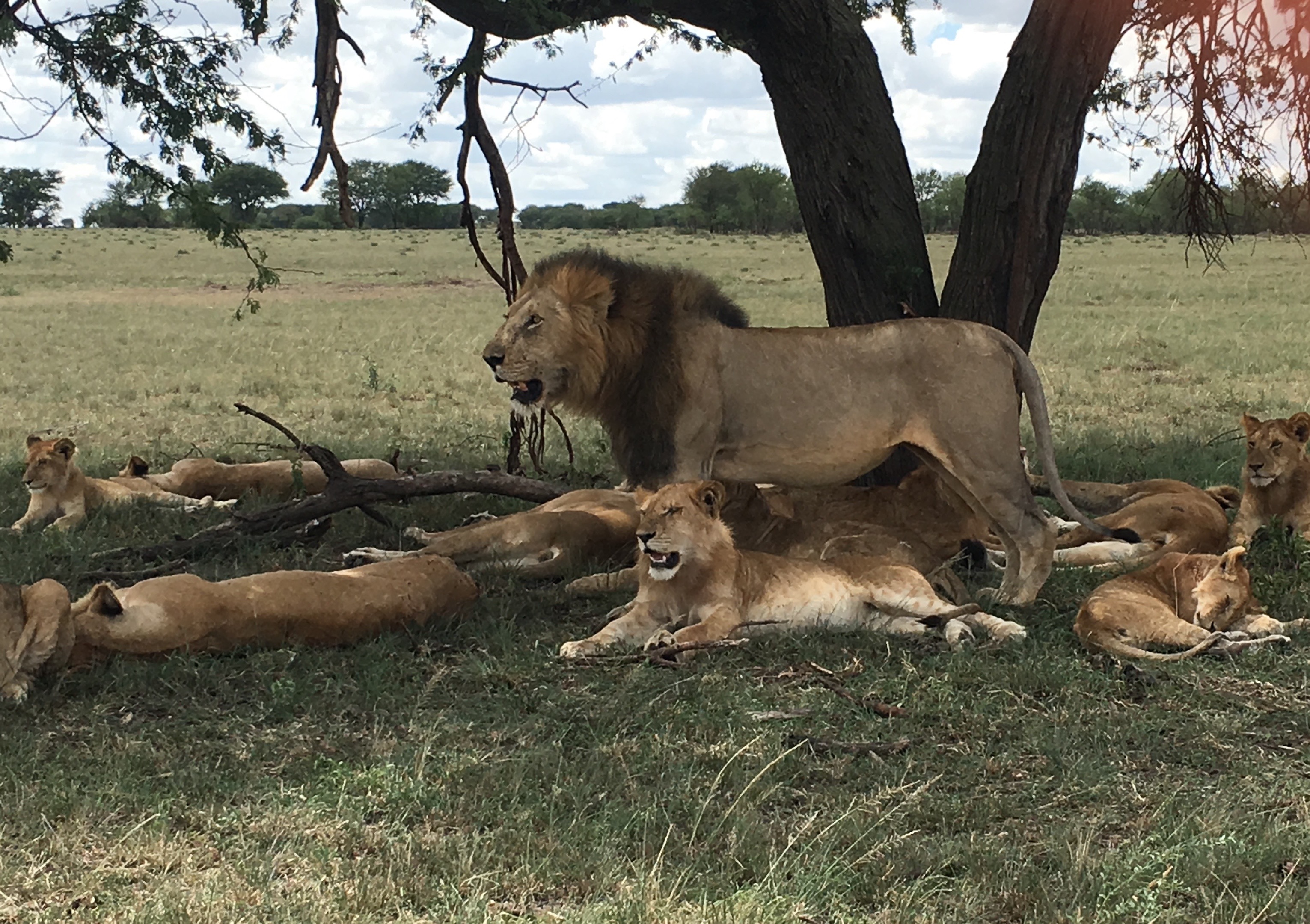 The rest of the pride hung back – still full from devouring the eland the previous day – wisely staying out of the noon sun under a tree and watching the spectacle, the alpha male lion among them. Evidently the zebra thieving lion was either subservient or — not clear — as male lions do not brook with rivals. Either way, we marvel at male animal behavior as being not all that different from some human male behavior.
The rest of the pride hung back – still full from devouring the eland the previous day – wisely staying out of the noon sun under a tree and watching the spectacle, the alpha male lion among them. Evidently the zebra thieving lion was either subservient or — not clear — as male lions do not brook with rivals. Either way, we marvel at male animal behavior as being not all that different from some human male behavior.
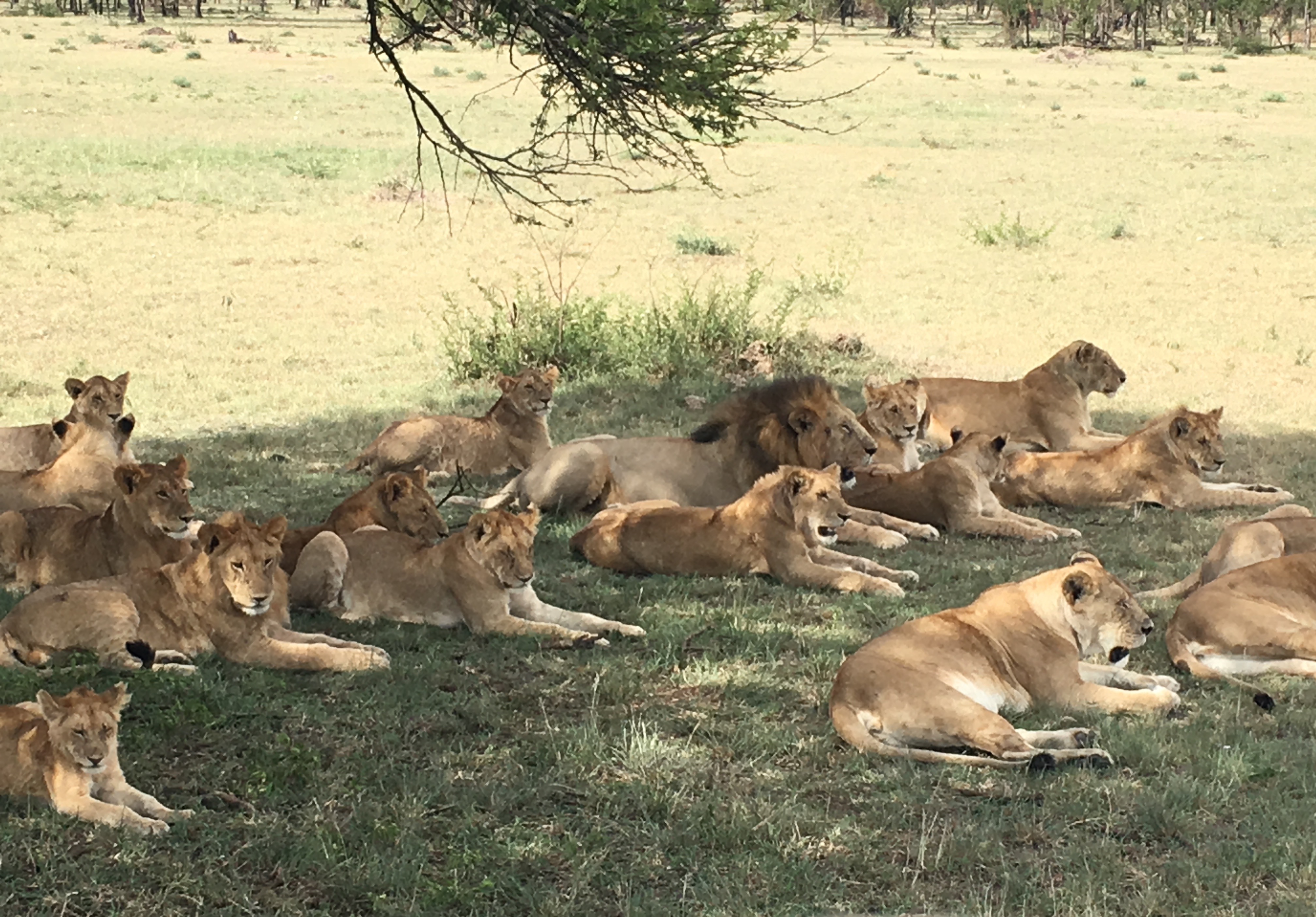 Several of the older cubs are starting to grow their adolescent male manes, and within months would be kicked out of the pride. No rivalry permitted and no incest allowed.
Several of the older cubs are starting to grow their adolescent male manes, and within months would be kicked out of the pride. No rivalry permitted and no incest allowed.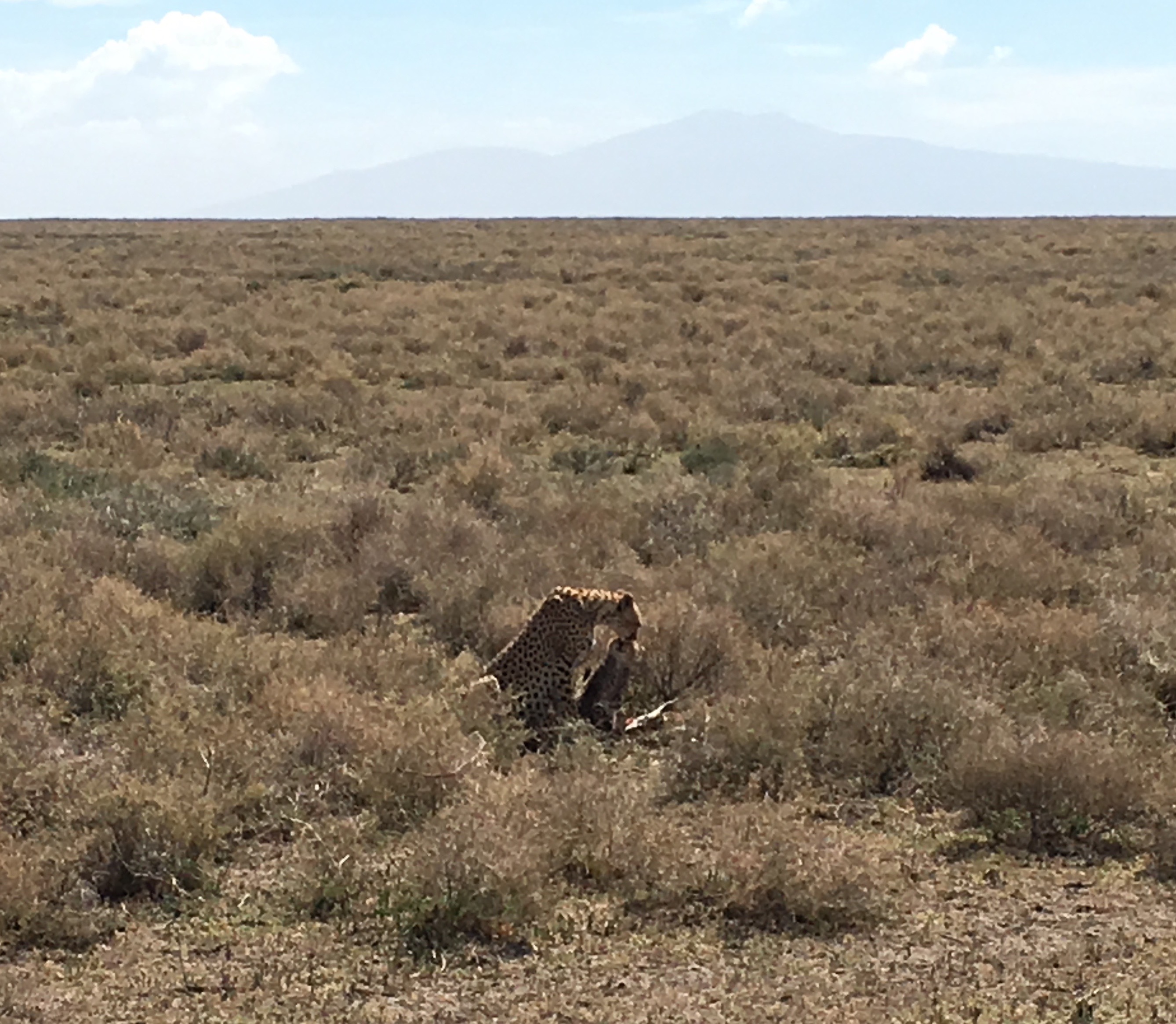 Mama cheetah cleans her cub after they feast on a gazelle, so that no scent of blood will attract predators.
Mama cheetah cleans her cub after they feast on a gazelle, so that no scent of blood will attract predators.
Cheetahs are lowest on the predator rank (lion, leopard, cheetah) and hunt solo, hence at a disadvantage to lions who hunt as a pride. (You have to wonder about the logic of evolution here.) It’s very rare to see a cheetah hunt – they hunt during the day and are remarkably camouflaged in the savannah. While they hunt, their unguarded cubs are easy prey to lion and leopard. Philip spots a cheetah and solitary cub and we wait patiently for an hour while she creeps up on a herd of Thompson gazelle. (Delicate and skittish with beautiful black markings). The gazelle look up, suspicious, move on, and return to grazing. The cheetah follows, keeping her cub down and quiet. (She may have had as many as five cubs — only one is left.) I find myself rooting for the cheetah, now that I see the whole picture: many, many gazelles – very few endangered cheetah. Gazelles can munch anywhere – the cheetah has to feed a surviving cub and spends hours strategizing. While she is the fastest creature on earth, she can only take off within 50 meters of her target. She needs to stay downwind, keep her cub hidden, gather her resources. When she takes off it is one of the most thrilling things I have ever seen. She is a speeding bullet and by the time the gazelle registers and leaps off, she has cut it off and pounces.
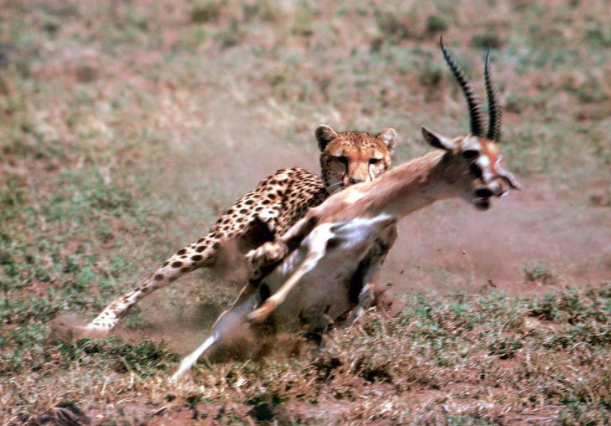 I did not take this picture – full disclosure. Faster than a speeding bullet…
I did not take this picture – full disclosure. Faster than a speeding bullet…
It is a merciful and fast kill and she drags the prize to a spot where she feels safe enough to call her cub, now over a kilometer away. It mews and calls (very dangerous) until it finds her. She is exhausted and takes 20 minutes or more to recover before she can start eating. I have a completely different sense of predator and prey, the intimacy and interconnectedness, the danger to predator of flying hooves and exposed cub and raised heart rate to the point of potential collapse. It’s awesome – in the way that nature is full of awe.
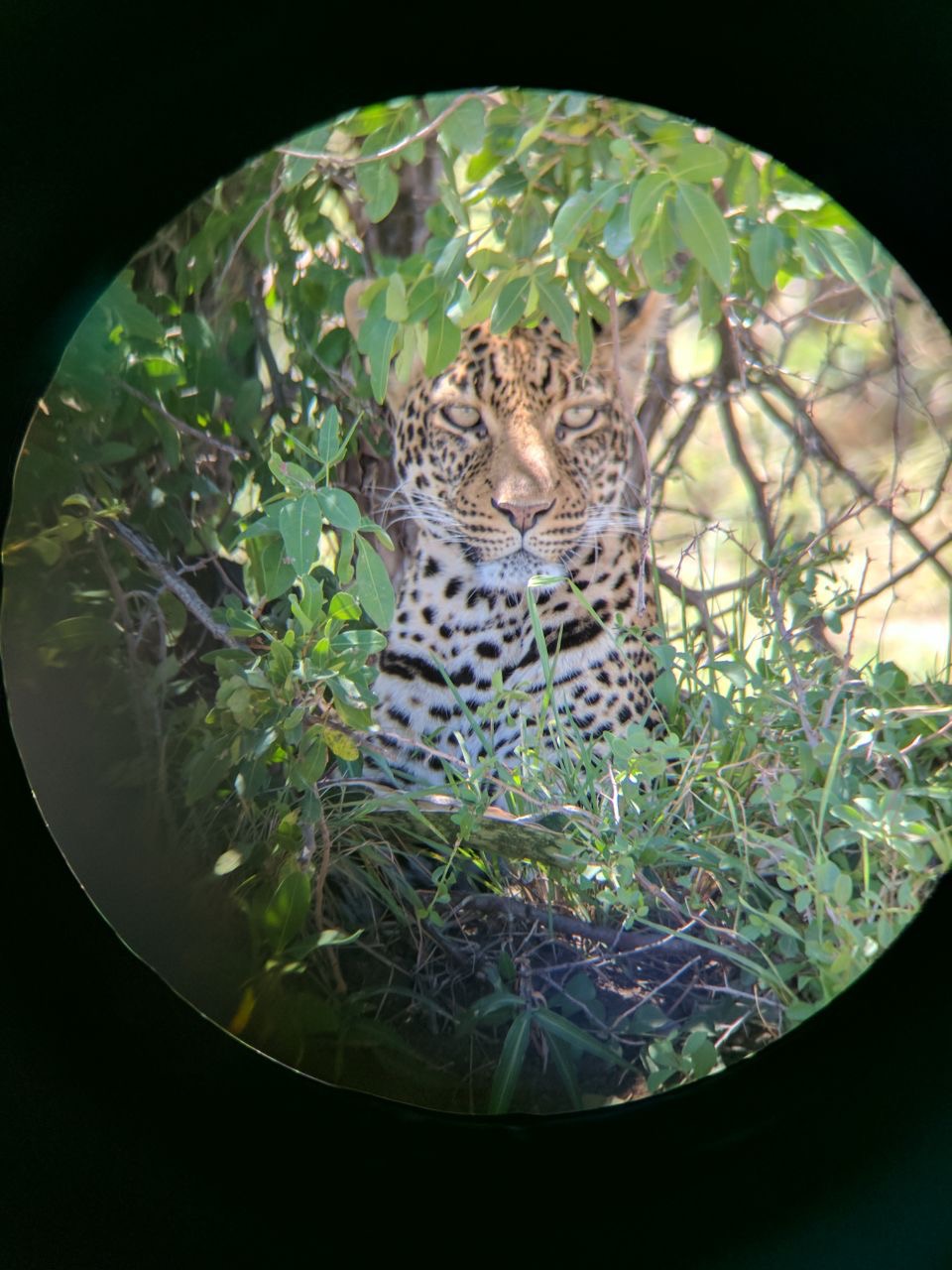
And while lions can look like giant house cats when stretched out and snoozing, and cheetahs are exotically beautiful with their tear-drop marked faces, leopards are just chillingly terrifying and other-wordly. You can see why ancients worshipped these creatures and attempted to take on their persona. Also solitary and solo hunters, leopards are equally endangered – their cubs unprotected by a pride. They are rare and we look for them for hours only to find one sitting at the edge of our camp (sobering) on a rock, evident only by the twitch of her tail. Our jeep is about 10 feet away, windows open, and we are speechless. We appear to have interrupted her tracking of prey and she curls her lip (in disgust? annoyance?) and bounds off the rock – we are terrified that she will jump into the car – but she veers around us and takes off.
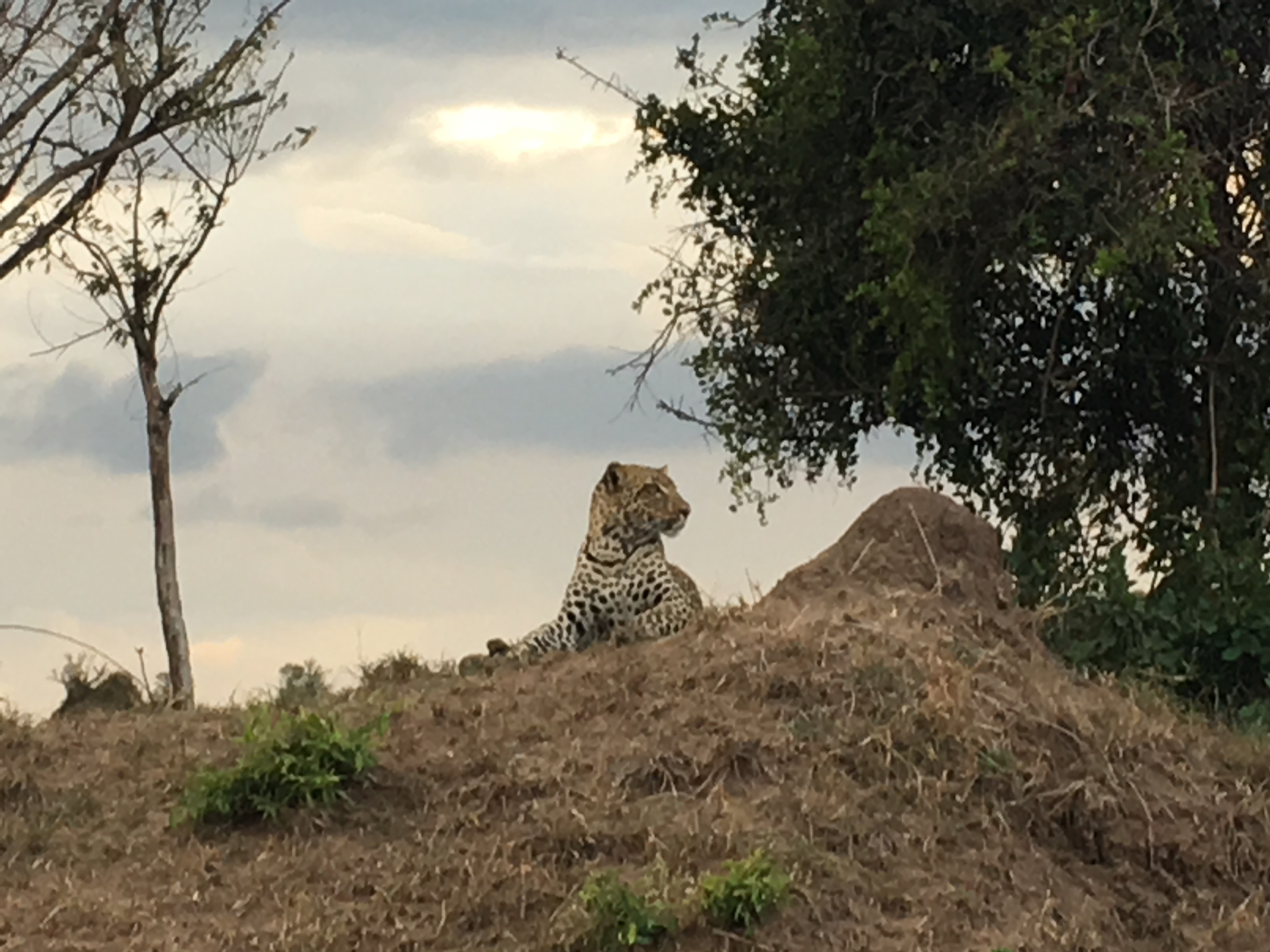 Our guide, Musa, hears jackals making a racket and interprets that they are warning that leopards are nearby. (How does he know they are yakking about leopards and not hyenas, or lions? No clue.) We sneak over and there she is – magnificent and owning the rocky outcrop. And then the bonus – 100 yards away is a male leopard – almost twice her size with gorgeous red fur and black rosettes. We hope that they have beautiful cubs.
Our guide, Musa, hears jackals making a racket and interprets that they are warning that leopards are nearby. (How does he know they are yakking about leopards and not hyenas, or lions? No clue.) We sneak over and there she is – magnificent and owning the rocky outcrop. And then the bonus – 100 yards away is a male leopard – almost twice her size with gorgeous red fur and black rosettes. We hope that they have beautiful cubs.
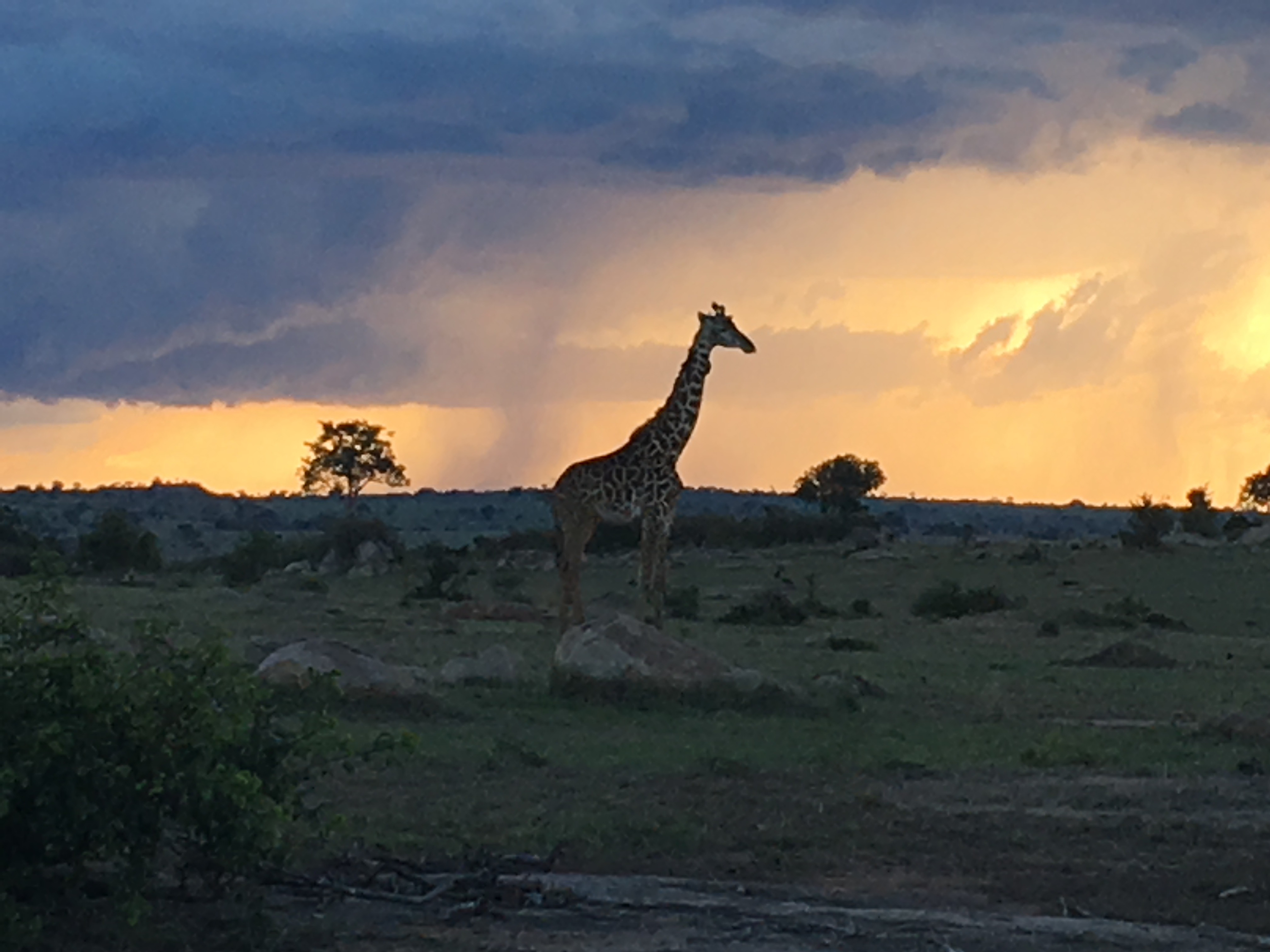 All the gatherers – gazelles, antelopes, wildebeests, zebra and giraffe are fair prey for the hunters. Even elephant babies. Part of the eternal majesty of the Serengeti is life and death in constant motion. Palpable. Always present. It adds a power and poignancy to the primeval beauty.
All the gatherers – gazelles, antelopes, wildebeests, zebra and giraffe are fair prey for the hunters. Even elephant babies. Part of the eternal majesty of the Serengeti is life and death in constant motion. Palpable. Always present. It adds a power and poignancy to the primeval beauty.
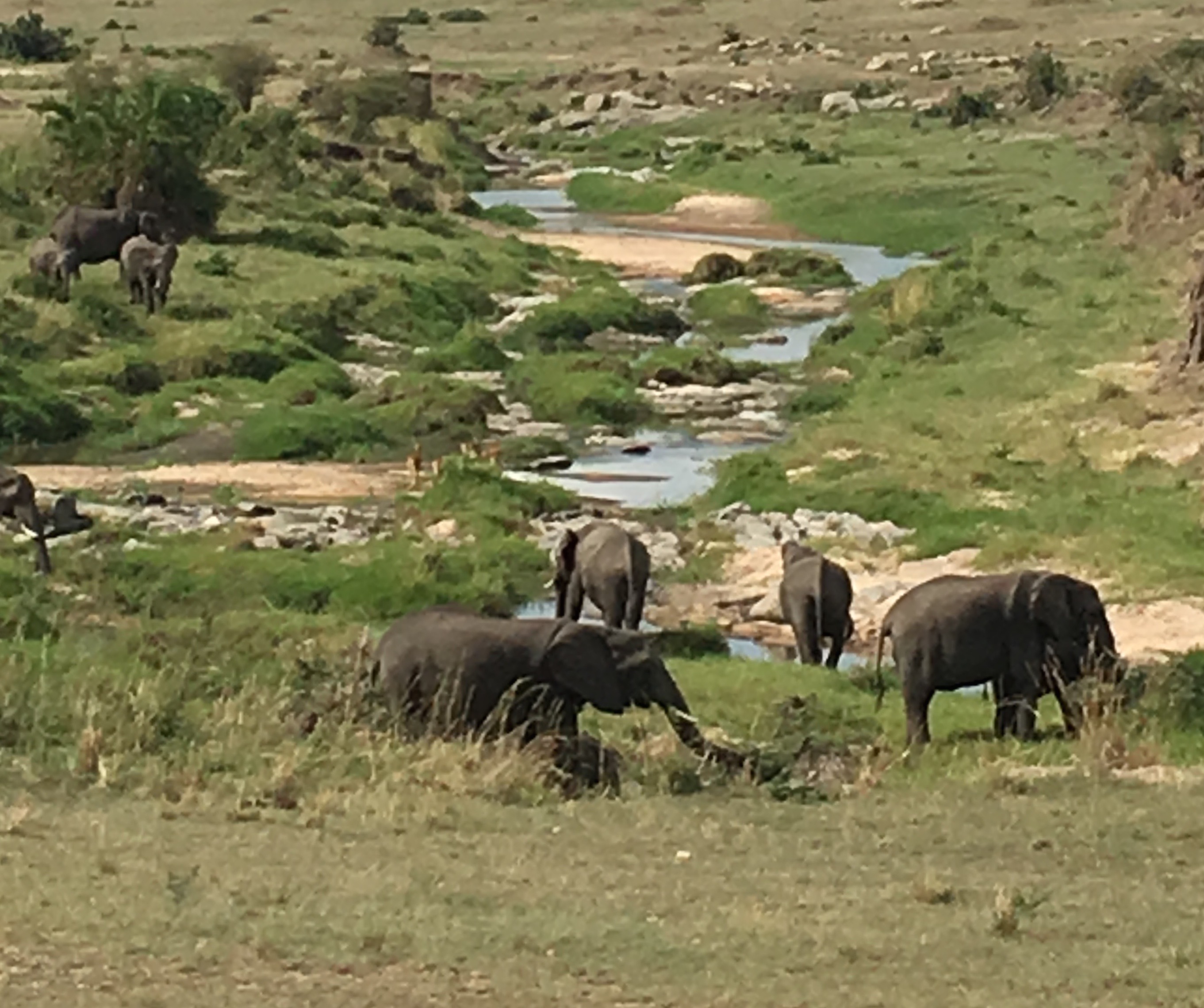 The land before time
The land before time
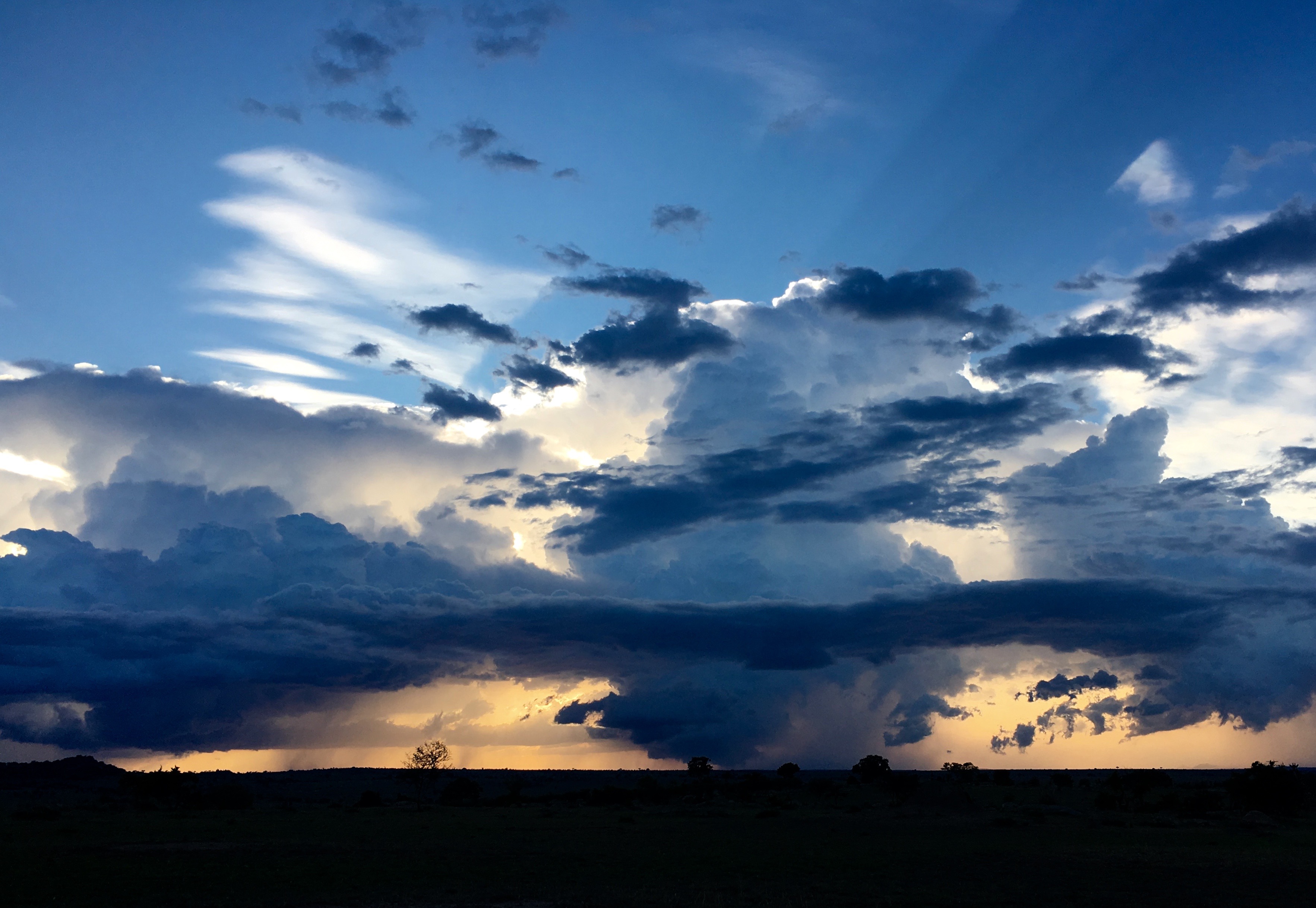 Northern Serengeti sunset. A reminder that day is done but the challenges of nighttime for hunter and gatherer are just beginning.
Northern Serengeti sunset. A reminder that day is done but the challenges of nighttime for hunter and gatherer are just beginning.
And then we return to our gorgeous Nomad Lamai camp, the highlight of our digs so far. Peaceful, eternal, blending into the surroundings, beyond comfortable – an “Out of Africa” experience.
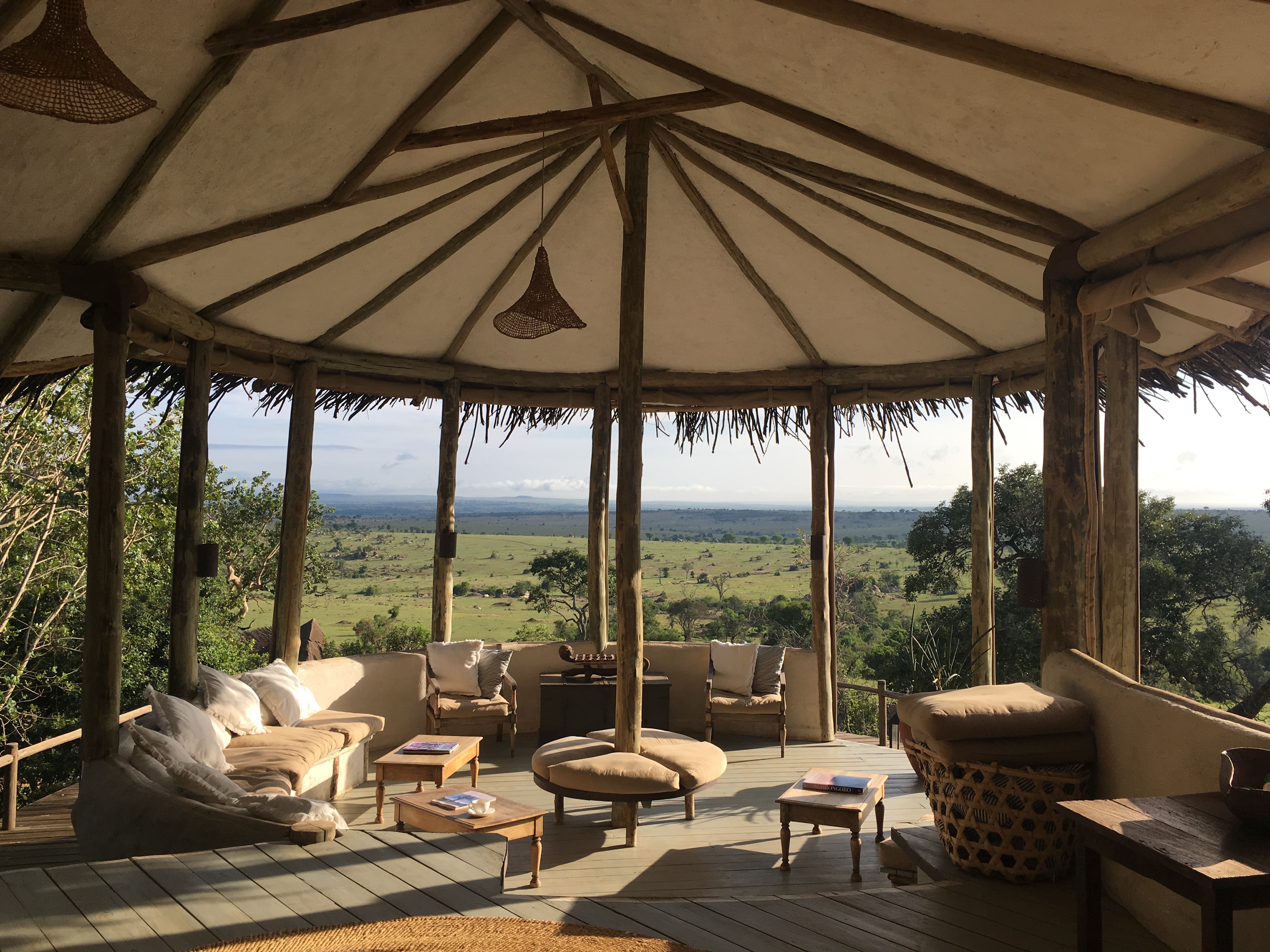 Nomad Lamai Serengeti – main living area
Nomad Lamai Serengeti – main living area
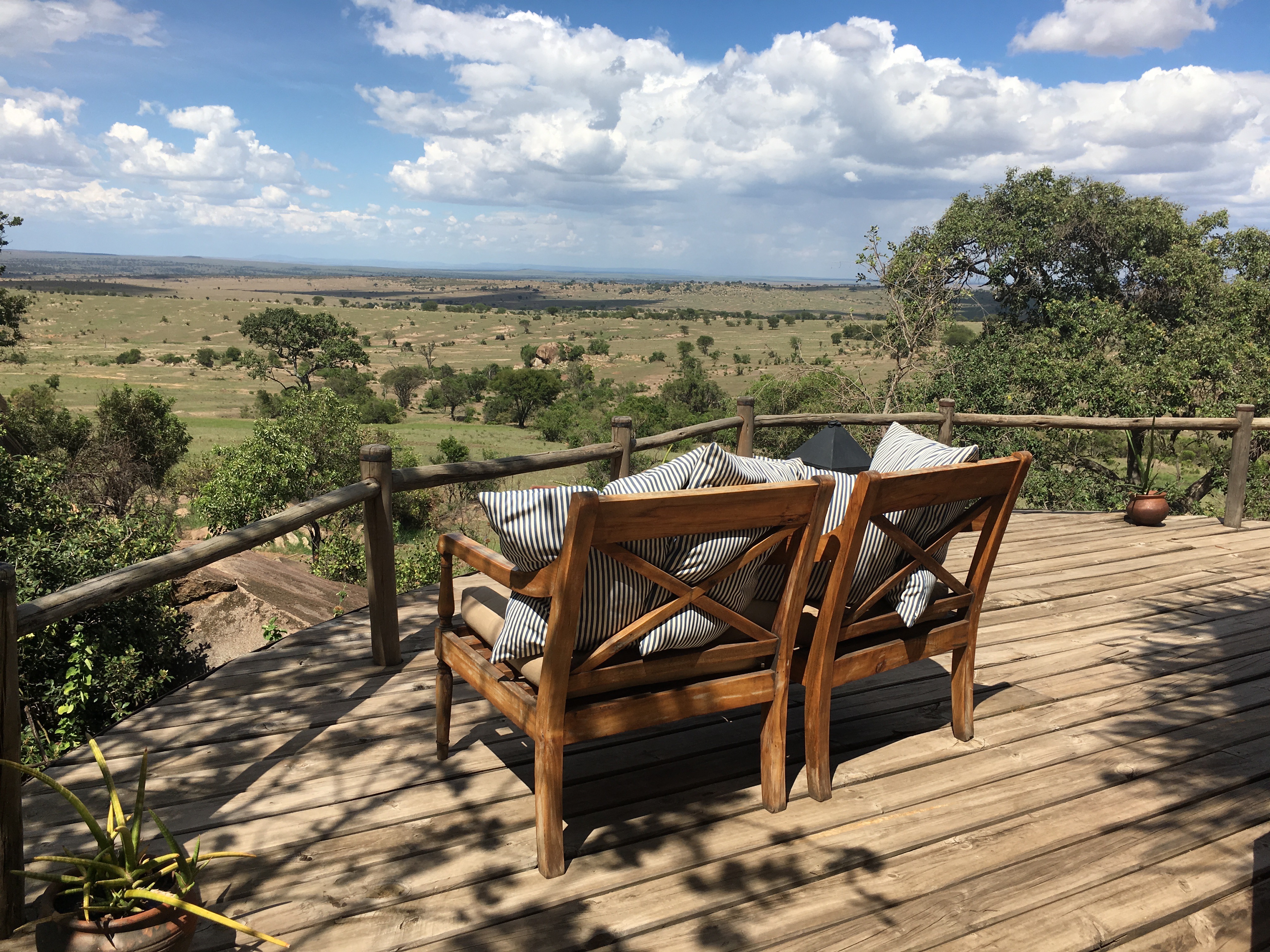 A view to die for… Lamar Serengeti
A view to die for… Lamar Serengeti
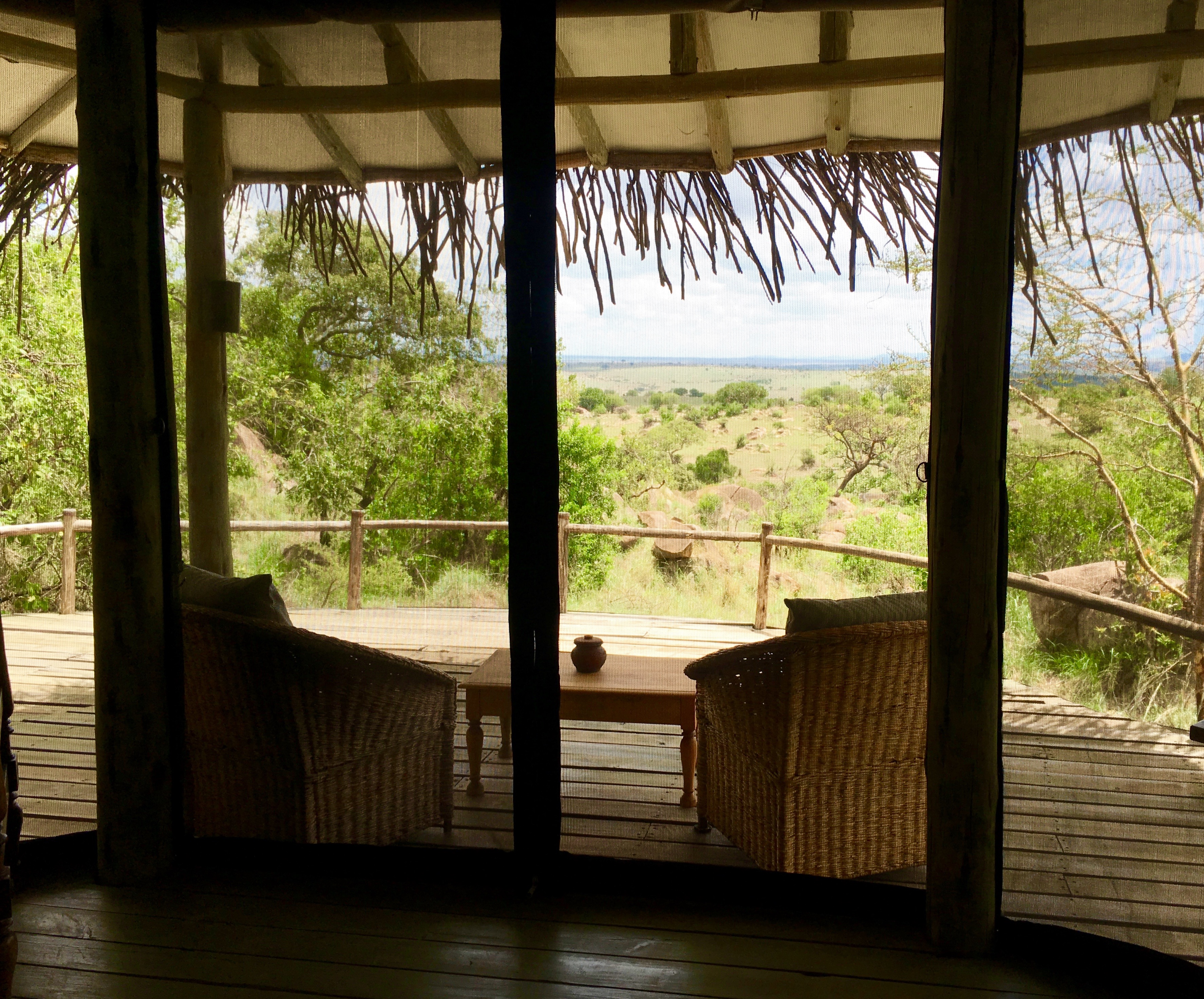 Serengeti views from Lamai cottage
Serengeti views from Lamai cottage
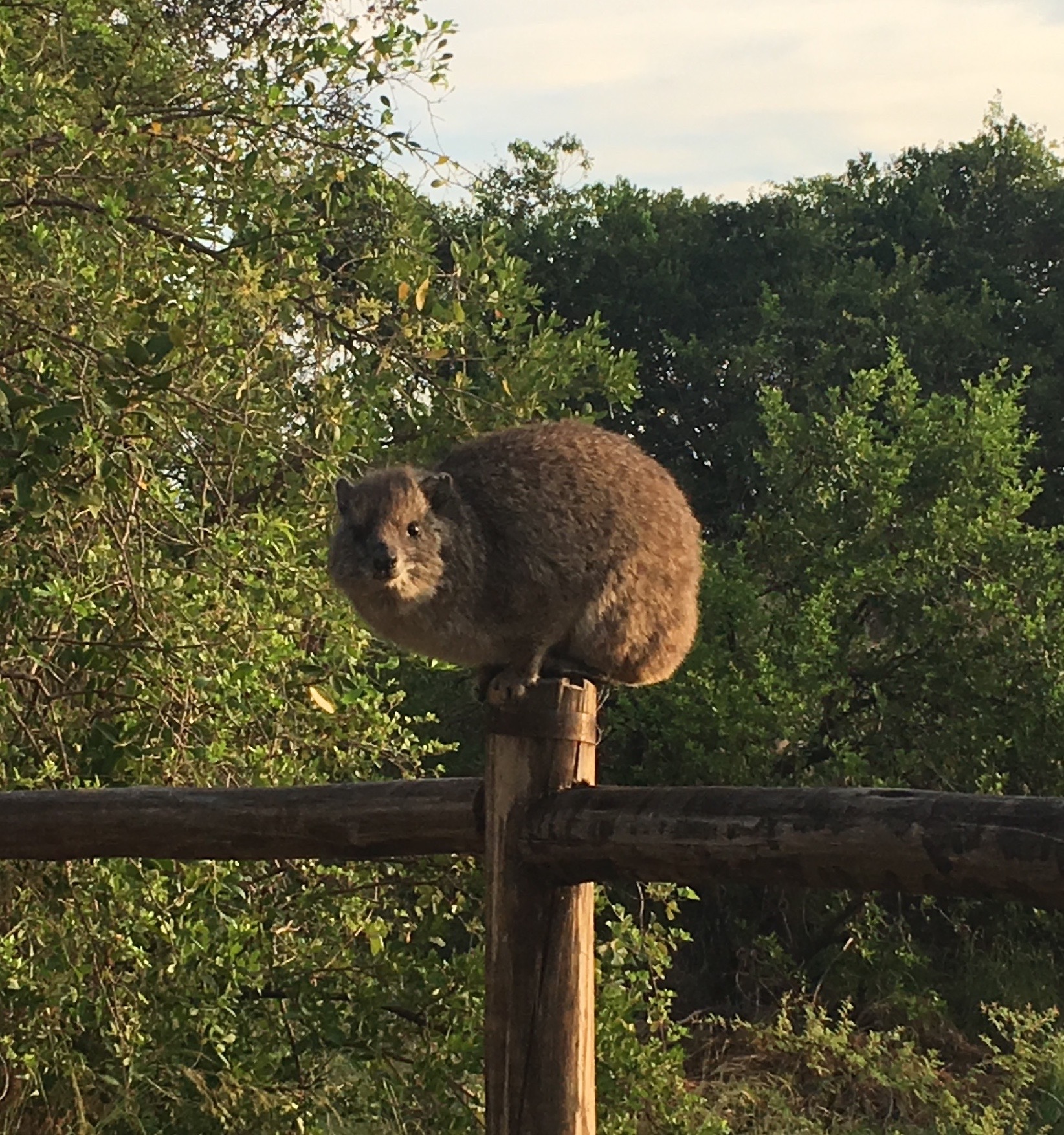 The rock hyrax – looking like a guinea pig – scurry all over the rocks at Lamai. This guy greeted us on our deck every morning. While they resemble fat tail-less squirrels they are actually part of the elephant and manatee family.
The rock hyrax – looking like a guinea pig – scurry all over the rocks at Lamai. This guy greeted us on our deck every morning. While they resemble fat tail-less squirrels they are actually part of the elephant and manatee family.